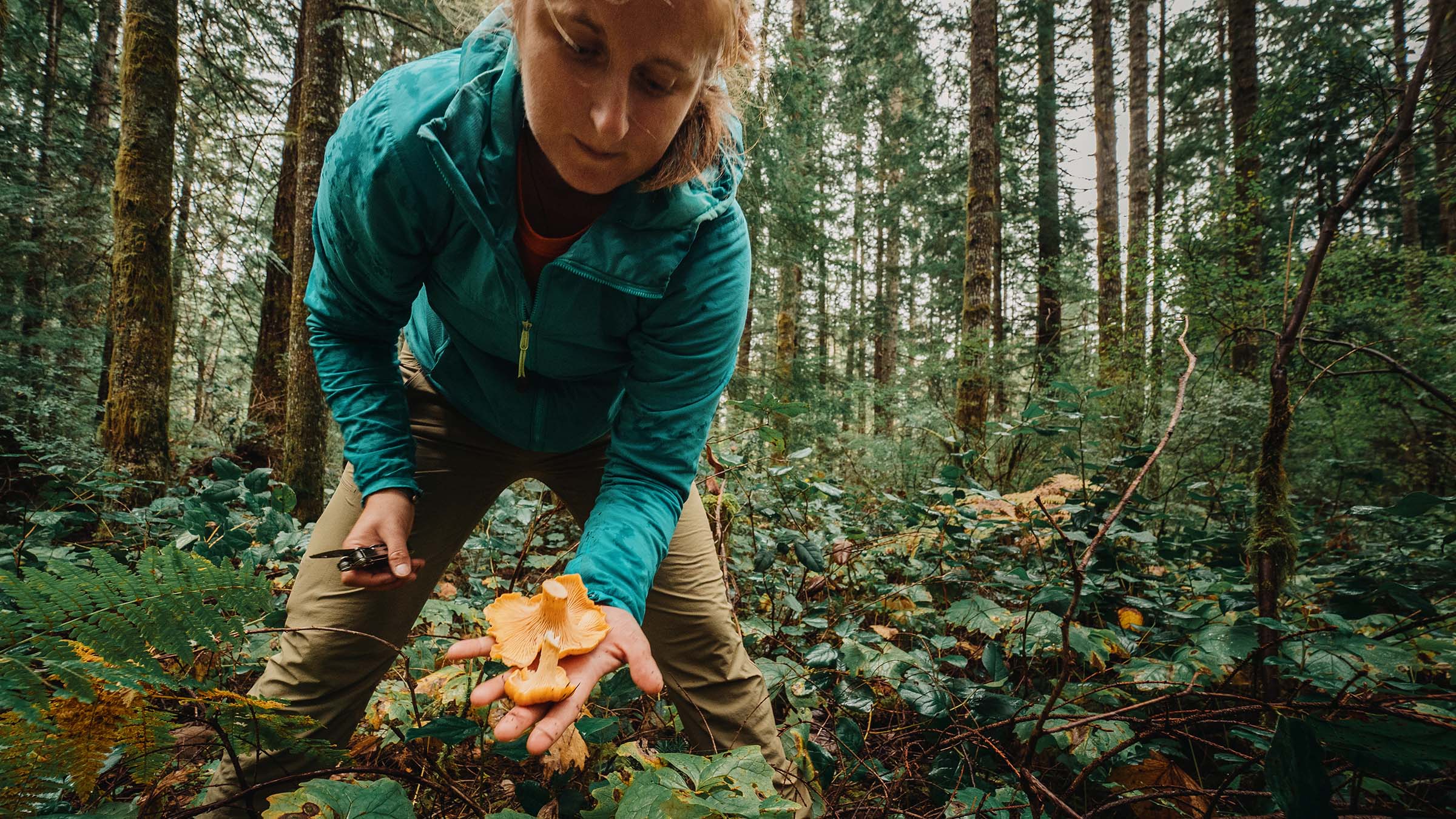Survival Lab: Eat Out

(Photo: Alex Ratson / Moment via Getty)
What’s safe to eat in the backcountry? There are many more options than you might think when finding a meal on the go in the backcountry. From edible bugs to flowers, there’s a feast waiting in the fields.

GREENS
Best Bet: Edible top-to-bottom, dandelions are easy to identify, have sweet flowers, and grow calcium- and vitamin-packed greens (great for salad).
Tip: Bitterness increases as plants mature; boil to reduce bite, or harvest young plants.
Good Choice: Clover provides an iron- and protein-packed meal. Spring shoots and flowers are sweetest; late-fall leaves taste like grass (i.e. not half bad).
Tip: Roots have more calories than the greens. Boil leaves and roots to reduce post-snack gut bloat.
In a Pinch: Peppery and full of protein (25 percent by weight), stingingnettles are edible for careful foragers.
Tip: Look up local species, and don’t confuse them with other hairy, toxic plants. Eat young shoots and leaves raw; boil mature leaves and roots.
STARCHES
Best Bet: Cattails’ hot-dog-on-a-stick spiked flowers are unmistakable. Choice bits: Roots (think sweet potato) and white shoots near the root (chop like leeks). Tip Wash and peel roots to eliminate waterborne pathogens.
Good Choice: Acorns, though bitter and chalky, are fat- and protein-rich.
Tip: Loaded with tannic acid, acorns require processing (roasting or boiling, see below) to avoid stomach upset.
In a Pinch: Cut into pine, spruce, or cottonwood trees to get to the astringent-tasting inner bark. Vitamin C-rich pine is a rare reliable winter food source.
Tip: Slice through bark to reach the softest, wettest layer, then peel strips. Chew raw, boil, or fry like chips.
FRUITS
Best Bet: Clustered berries grow abundantly, so pick with impunity: All raspberry-style aggregate berries are edible.
Tip: Look for productive brambles along the edges of meadows.
Good Choice: We found vast patches of red, bulb-shaped rose hips—and harvested a hat full of the fiber- and vitamin C-bombs in minutes.Vibrant orange bulbs often survive a few snows.
Tip: Split, then scrape out the seeds before chewing the pulpy fruit.
In a Pinch: Thorny hawthorne trees sprout tiny, apple-like fruits; eat the mild fleshy portion and discard the pit (poisonous in some species).
Tip: All varietals are edible; look for lobed leaves, thorns, and songbirds, which flock to fruiting trees from mid-fall into winter.
PROTEINS
Best Best: Fish are nature’s jackpot of protein and healthy fats. All North American fresh and saltwater varieties (plus snails, mollusks, and shellfish) are edible.
Tip: Bring a fishing kit.
Good Choice: Plentiful and nutritious (about half fat, half protein), ants and termites are sour, but safe (larger bugs contain parasites and/or are often toxic).
Tip: Chimp wisdom: Poke a stick into an anthill or termite mound to extract the buggers with minimum sting.
In a Pinch: Always cook a grasshopper—it tastes better that way, and you’ll avoid inheriting its tapeworms. TipPull off the head, which creates a cavity for spearing it with a roasting stick.
Pack a Tiny Tacklebox
This pocket-size fishing kit could save your life.
» Case An ultralight Altoids Smalls tin (.5 oz.). Stow it in your pants pocket, in case you lose your pack.
» Tape at least three hooks of different sizes to the inside of the lid.
» Wrap 100 feet of 12-pound line around a business card or pencil.
» Pack several weights and lures (in case live bait is scarce—or you need to eat the worms yourself).
» Fit in a mini bobber, and tick tweezers to pull hooks.
» Using a larger tin? Squeeze in a mini knife, and more flies, jigs, and line.
Key Skill: Boiling Greens
Give your wild edibles a bath: Boiling can remove bitterness, improve texture and taste, and even remove mild toxins. Timing varies (nettles only need a minute or two), but when in doubt, boil roots, greens, and bitter nuts or seeds (like acorns) for 10 minutes, change the water, and boil for another 10 minutes. Can’t build a fire? Put your produce in a sock and soak it overnight in a stream.